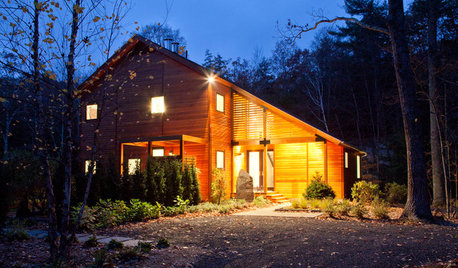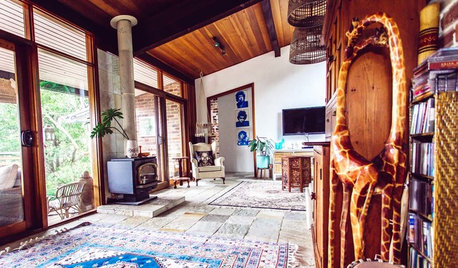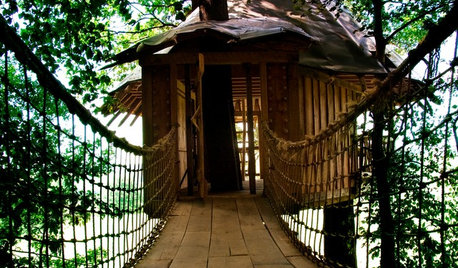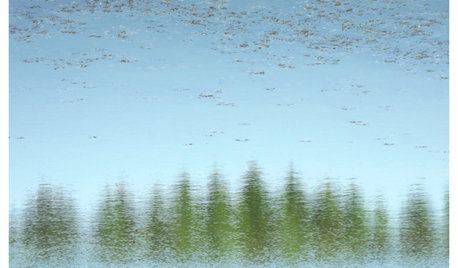Pubicalyx up in trees
tropicbreezent
11 years ago
Related Stories

MOST POPULARA Magical Tree House Lights Up for Christmas
From the Most Popular file: An incredible tree house takes things up a notch for the holidays. See how it came to be
Full Story
HOUZZ TOURSHouzz Tour: Up and Out Around a Heritage Tree
A Texas ranch house gets a modern makeover and a two-story addition that wraps around a protected backyard elm
Full Story
HOUSEPLANTSSee How Fiddleleaf Fig Trees Can Liven Up Your Decor
The tropical houseplant with big green leaves adds a cheerful and striking design element to rooms
Full Story
CONTEMPORARY HOMESHouzz Tour: Strong, Modern Lines Stand Up to the Trees
Modernism takes kindly to the New York woods, with double-height ceilings for openness and a burbling creek for music
Full Story
HOMES AROUND THE WORLDMy Houzz: At Home With Nature Up in the Trees
This homeowner’s creative bungalow on the Australian coast has a bohemian air and a star-studded history
Full Story
LANDSCAPE DESIGNWarm Up Your Home With an Evergreen Windbreak
Plant tall trees for more warmth in winter, serenity in summer and good looks all year long
Full Story
GARDENING GUIDESGreat Design Plant: Kumquats for a Juiced-Up Winter
Grow it for the edible fruit or its good looks alone. This citrus cousin will brighten any gray winter day
Full Story
OUTBUILDINGS12 Fun Backyard Forts Grown-Ups Can Love, Too
Kids might use them for secret meetings, but the word is out on these tree houses and playhouses that consider adult design tastes
Full Story
SHOP HOUZZShop Houzz: Save Up to $1,000 on Fine Photography
Natural images of water, trees and terrain add a tranquil vibe to any space
Full Story0

GARDENING GUIDESGreat Design Tree: Australian Tea Tree
A living sculpture with an unmistakable appearance, this coastal native creates an intriguing landscape scene
Full StorySponsored







tropicbreezentOriginal Author
tropicbreezentOriginal Author
Related Professionals
Barrington Hills Landscape Architects & Landscape Designers · Beavercreek Landscape Architects & Landscape Designers · Salisbury Landscape Architects & Landscape Designers · Wake Forest Landscape Contractors · Wakefield Landscape Contractors · Eureka Landscape Contractors · Holtsville Landscape Contractors · Huntley Landscape Contractors · Los Banos Landscape Contractors · Riverview Landscape Contractors · South Lyon Landscape Contractors · Woodbury Landscape Contractors · Crowley Driveway Installation & Maintenance · Bear Driveway Installation & Maintenance · Braintree Driveway Installation & MaintenancetropicbreezentOriginal Author
tropicbreezentOriginal Author
tropicbreezentOriginal Author
emt23
goddess9
mdahms1979
Denise
cpawl
cpawl
tropicbreezentOriginal Author
cpawl
mdahms1979
tropicbreezentOriginal Author
cpawl
tropicbreezentOriginal Author
cpawl
tropicbreezentOriginal Author
mdahms1979
tropicbreezentOriginal Author
mdahms1979
tropicbreezentOriginal Author
mdahms1979
tropicbreezentOriginal Author